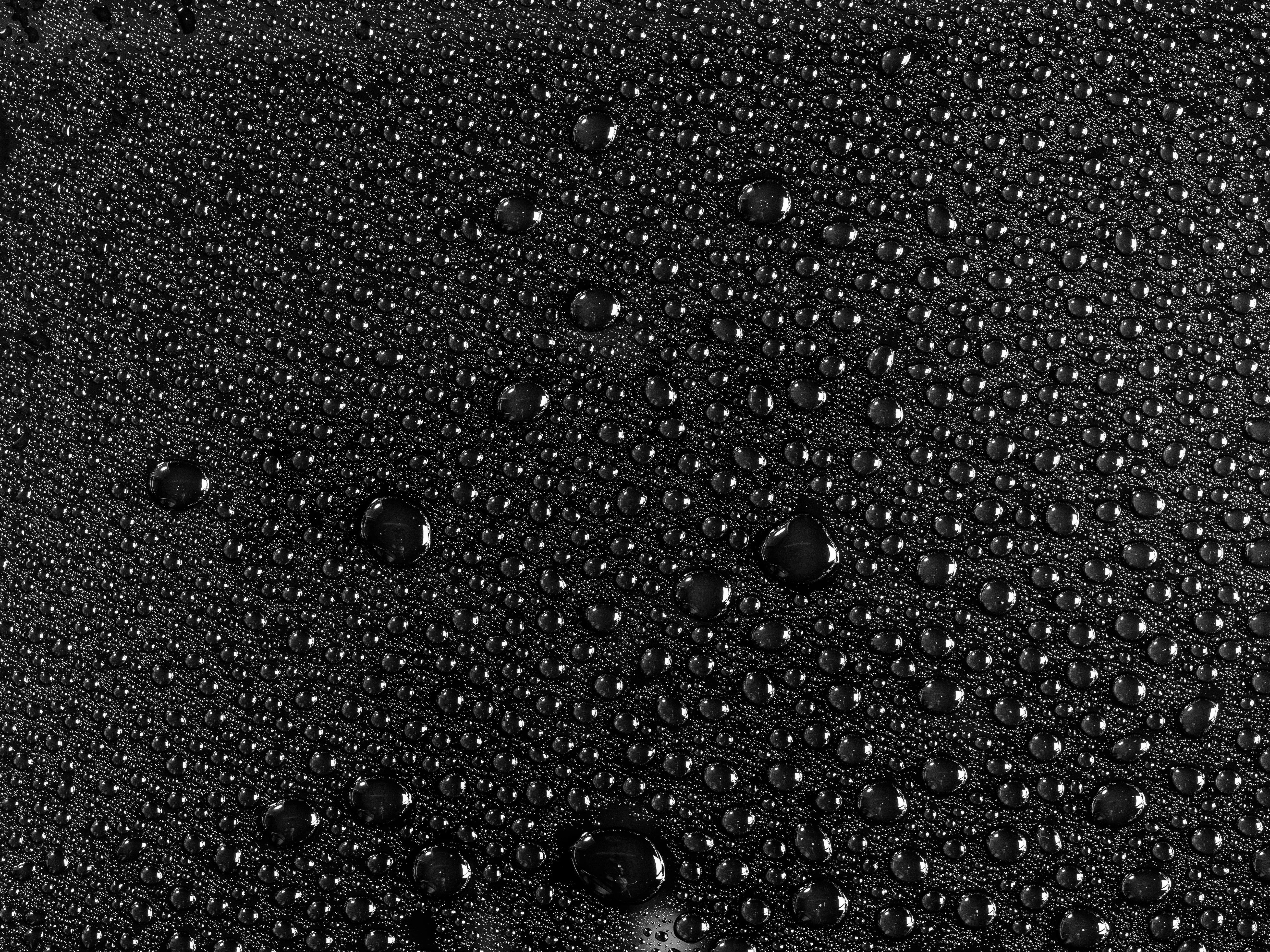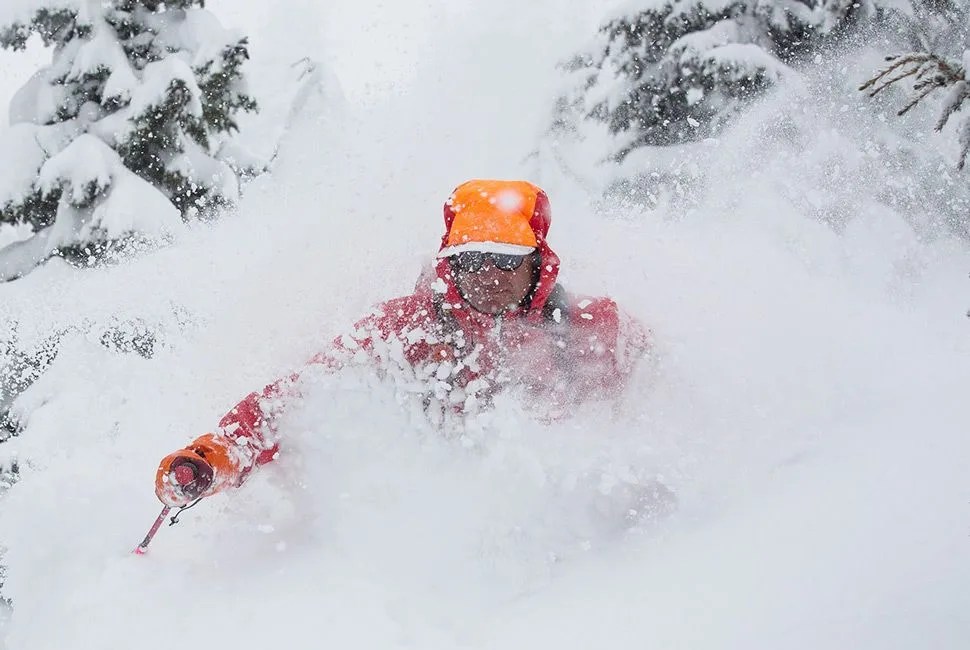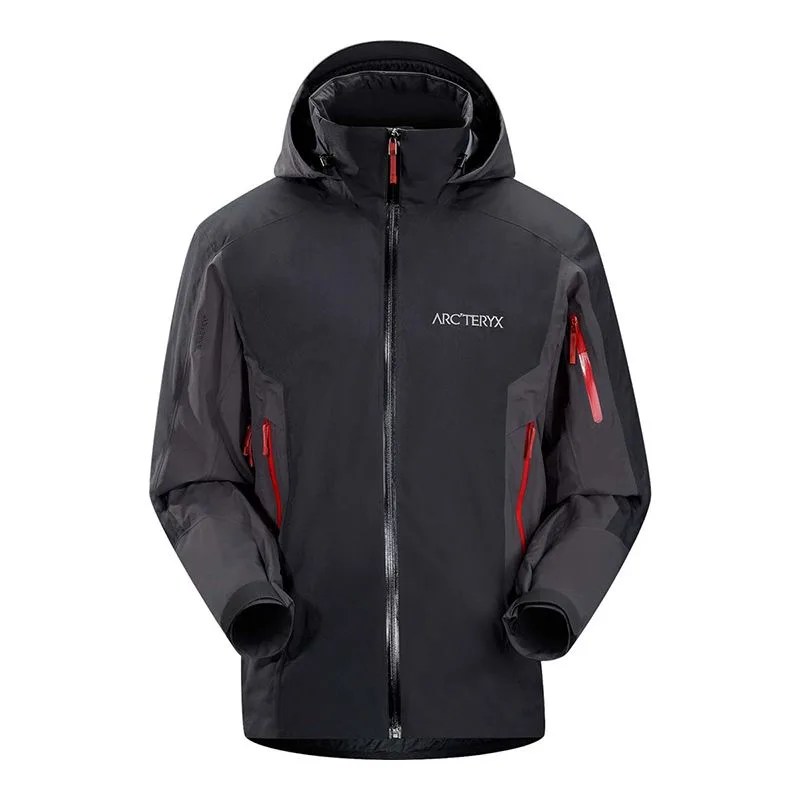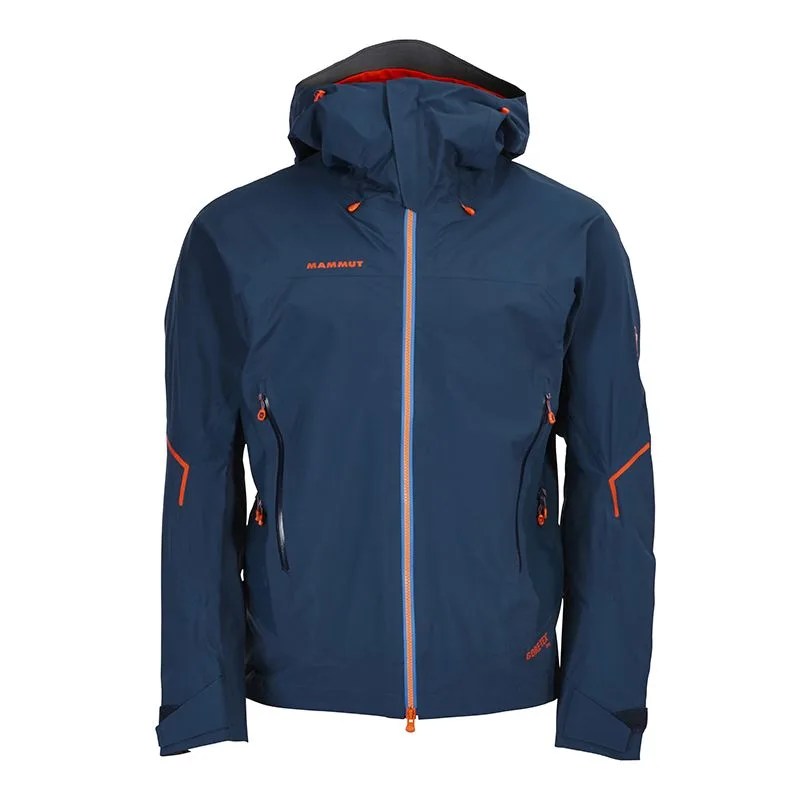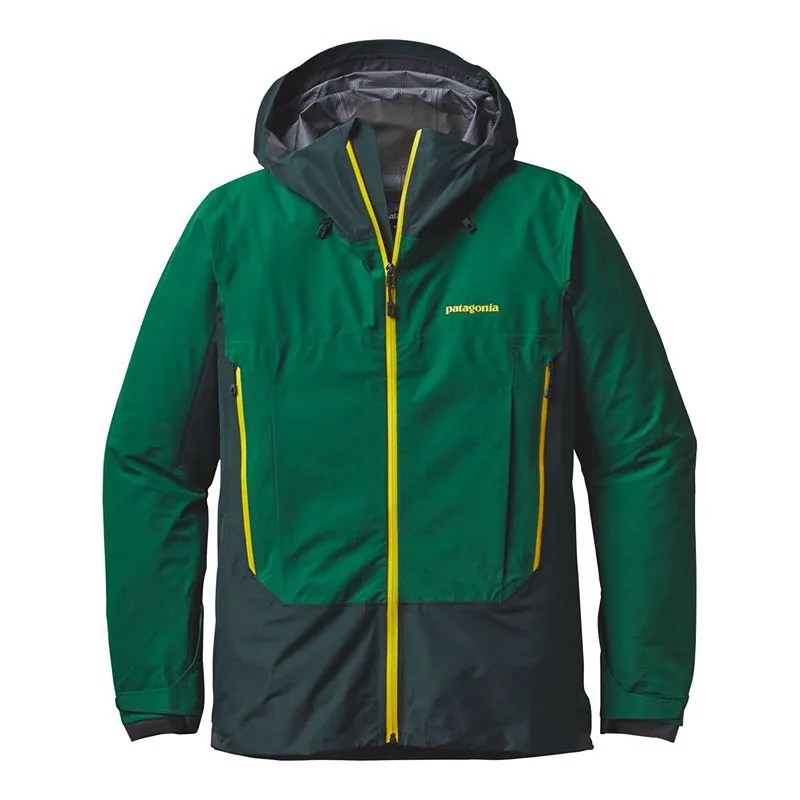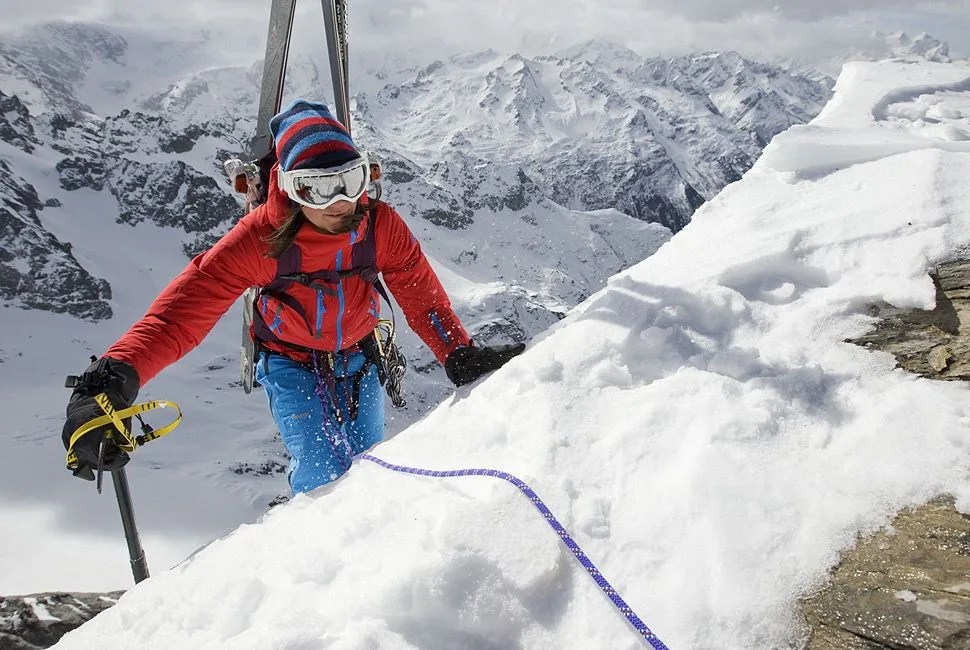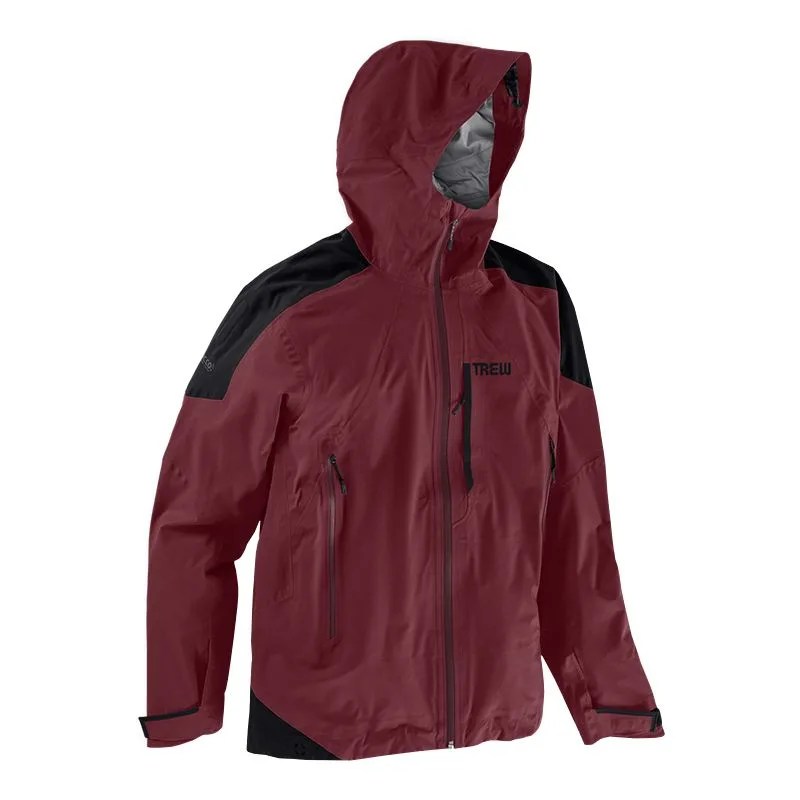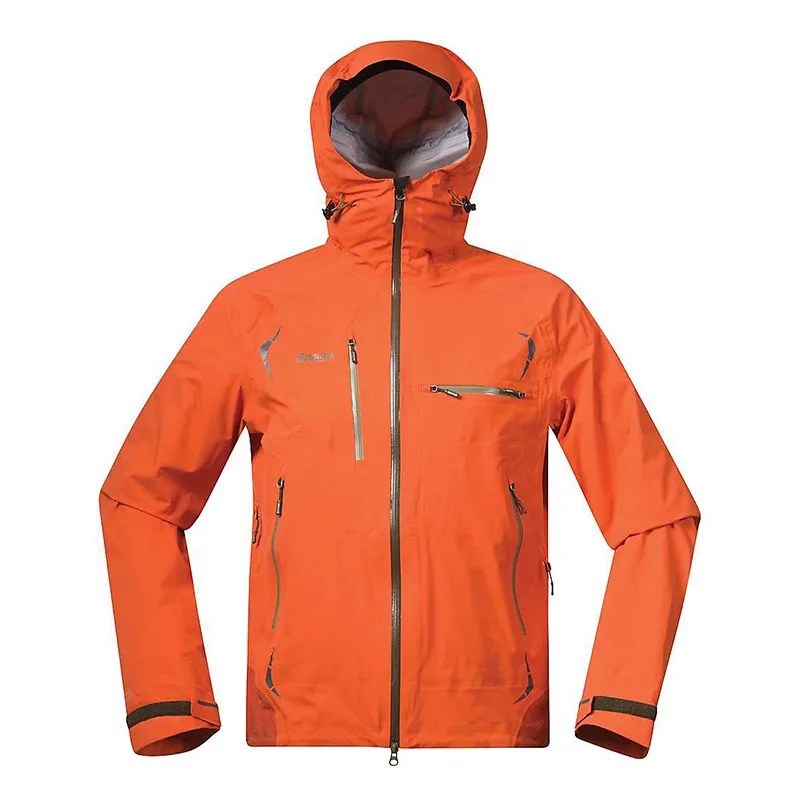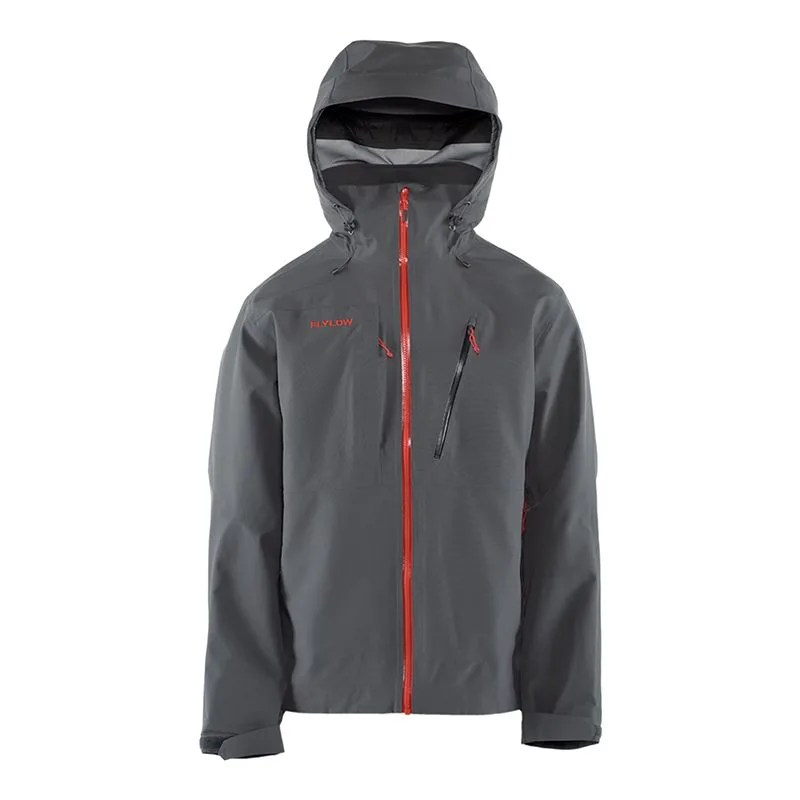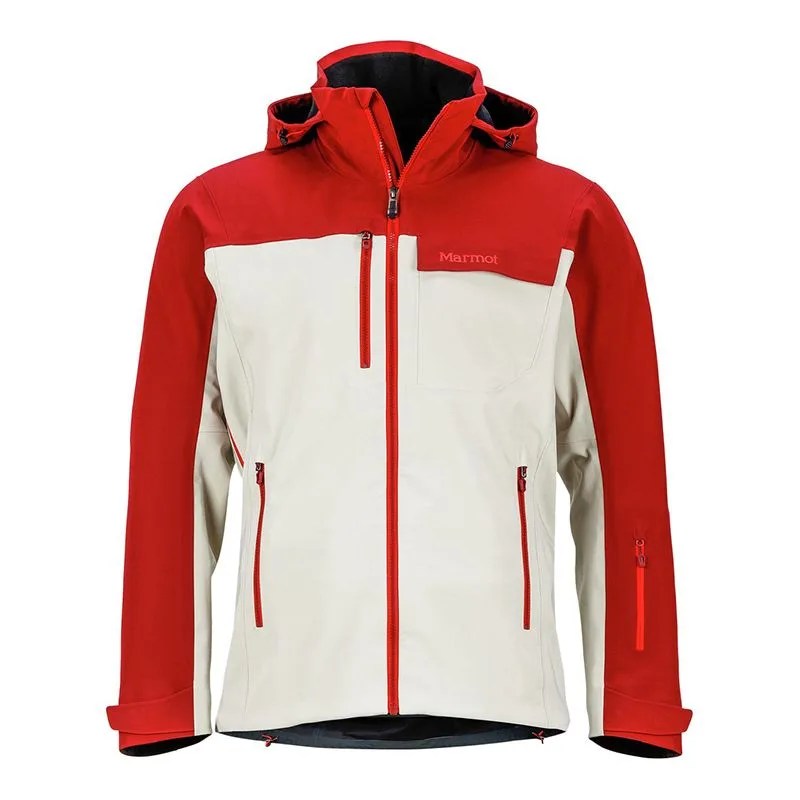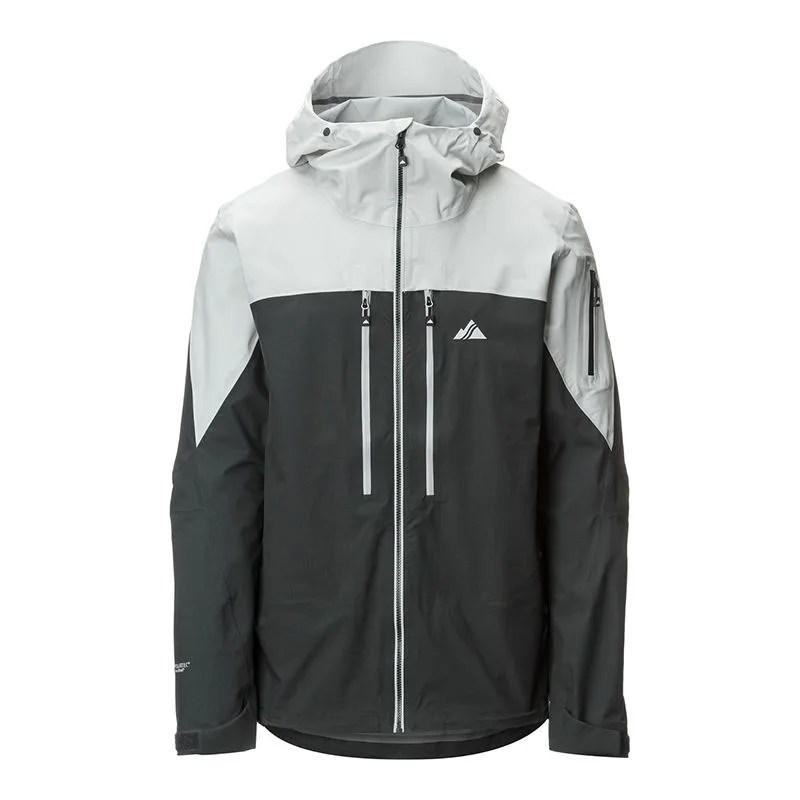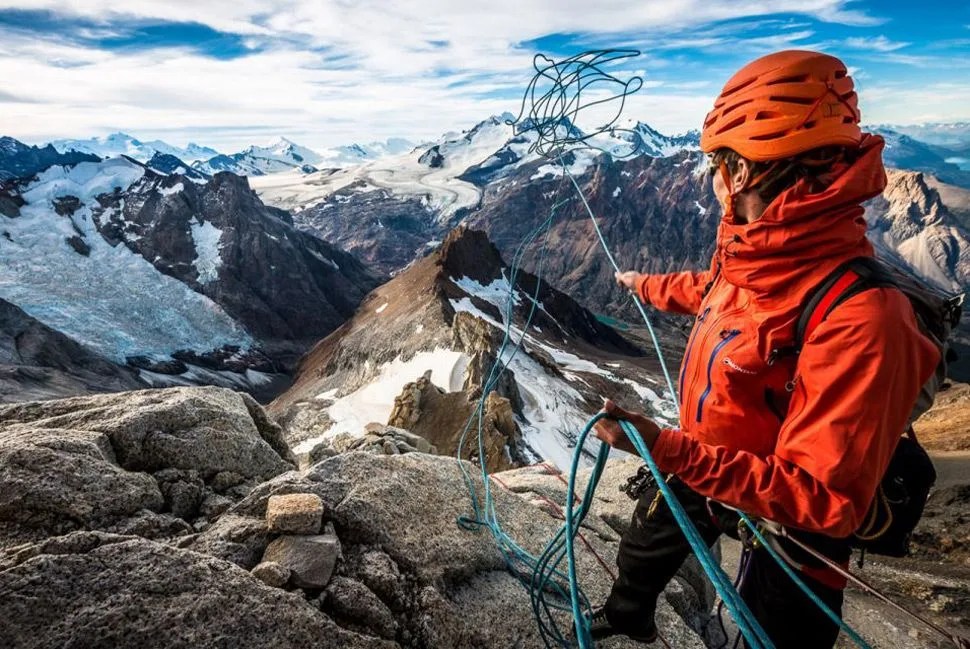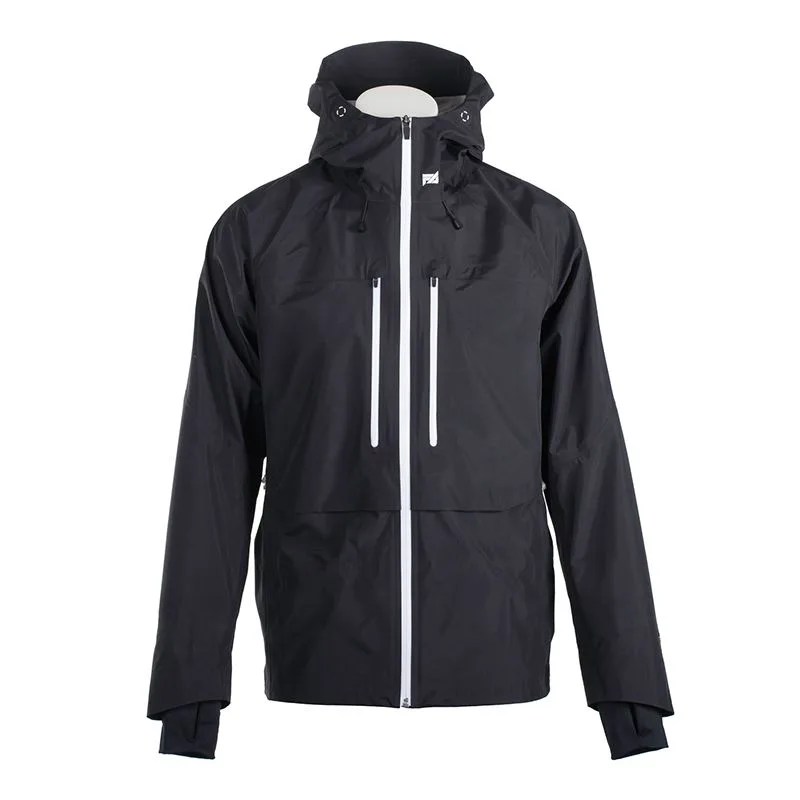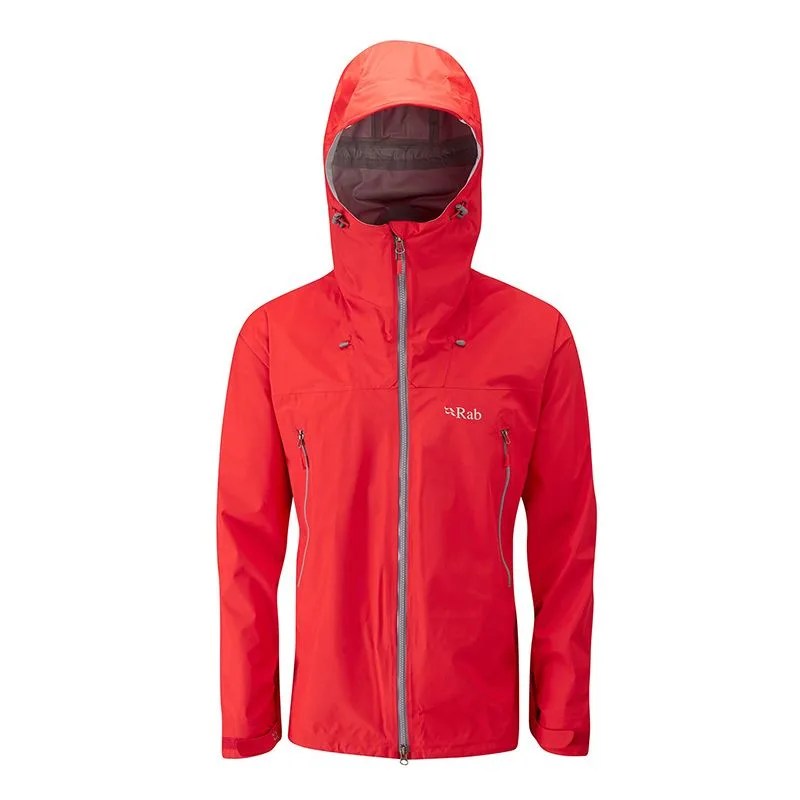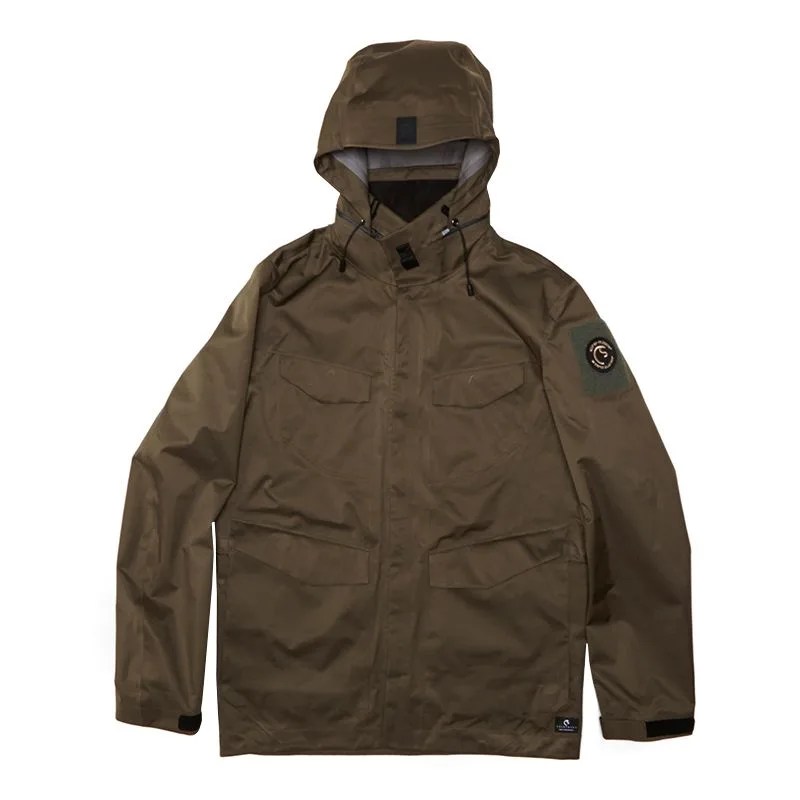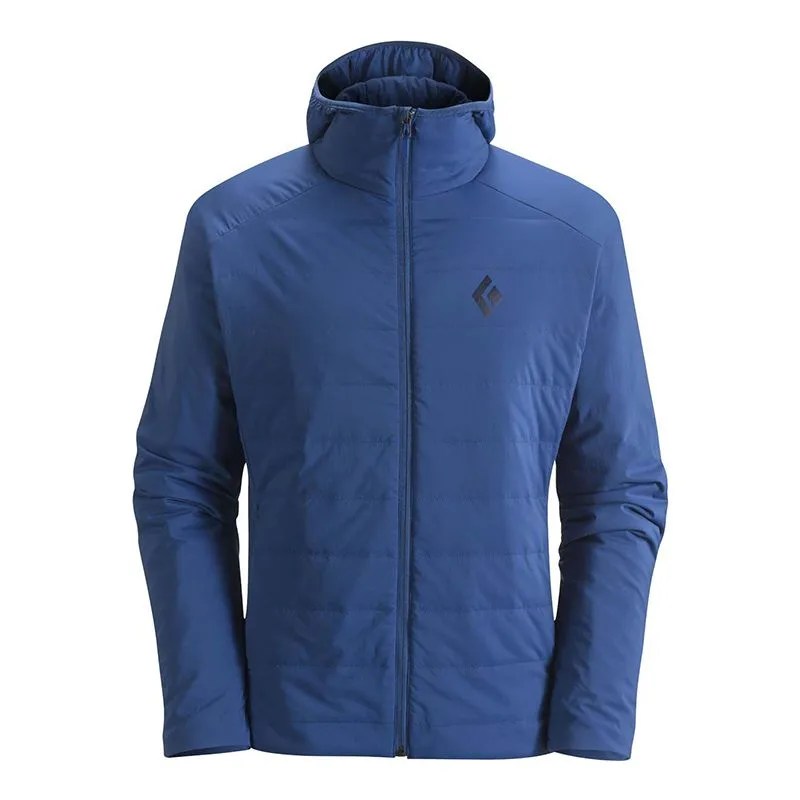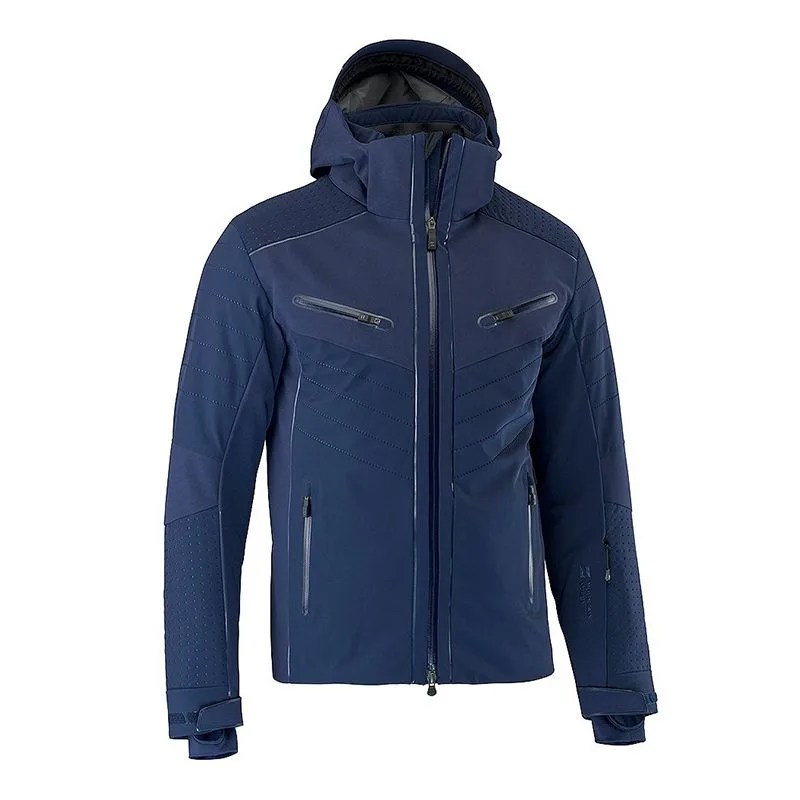Editor’s Note: This article has been updated for October 2016.
The very idea of a waterproof and breathable shell poses an obvious challenge: How can it be breathable, which implies permeability, yet waterproof, which would seem to mean impermeable? The outdoor industry has almost universally settled on an answer in the form of a three-layer fabric (there are also two- and 2.5-layer shells, but three is generally considered the most durable and best suited for winter), made up of an exterior textile, a technical membrane and a backer textile, all of which are bonded together. The basic idea is that this fabric — specifically its membrane — prevents outside water from seeping in while also allowing sweat and heat to escape, creating a piece of outerwear that can be used for active outdoor pursuits in the cold weather.
The outer textile of most three-layer shells is made of a rugged nylon or polyester that’s coated with Durable Water Repellent (DWR). The inner membrane is a microporous fabric, typically made of ePTFE or Polyurethane that acts as the shell’s primary waterproof and breathable layer. It’s the secret sauce. The backer textile is a thin layer, usually gauze, that’s laminated to back of the membrane, which eliminates the need for a liner.
While the waterproof and breathable technologies are all generally related in the way they function, several brands have proprietary technologies, among them Gore-Tex, NeoShell, eVent, Schoeller and Dermizax NX. Discerning one technology from another can be difficult, in part because the technology is kept under lock and key, but also because the technology requires an understanding of terms like “phase change” and how things work on a molecular level. So we asked the chemists, engineers and designers who worked hands-on with each. Note that there are plenty of other proprietary technologies like Marmot MemBrain and Helly Hansen’s Flow membrane, but we chose technologies that are available across a variety of brands. Below are our experts’ responses, along with three winter shells that incorporate the associated technology.
About Comparing Technologies:
Finding empirical data to compare waterproof-breathable technology is difficult. For one, there are numerous ways to test waterproofness and breathability. According to Stephen Kerns, President of Schoeller Textiles USA, most companies use a preferred testing method that lends itself to their product’s best result, which may not the best for others. For this reason, most companies “steer clear of marketing comparisons on breathability and waterproofness claims with other companies,” he said, as it “becomes a slippery slope.”
Gore-Tex Pro
Expert: Mark McKinnie, Gore’s Product Specialist in the UK
